
Sick of having your guard passed and your face smashed every time you try to play the worm?
Are you starting to think it’s a bullsh*t guard that only the elite and lanky can play?
When you watch Keenan play the Worm Guard, does it feel like watching someone tie their shoes, but when you do it, it’s like tying your shoe with a Rubix cube attached to a shark?
That is…
..Risky AF?
The truth is, the Worm Guard isn’t a difficult position to play…
… you’re just making it difficult.
And, usually, the problems with your Worm begin with the way you set it up…
In this article, we’re going to cover some of the amazing benefits of the worm guard, and 6 of the most common mistakes people make that cause them to say things like…
“This guard doesn’t work”…
“This wouldn’t work in the streets”…
“#everydayporrada”…
Concepts Behind The Worm Guard
So, before we get started fixing those holes in your Worm Guard, let’s take a quick look at the reasoning behind playing the Worm Guard and its advantages over other positions.
Trading Off 2 Limbs for 4-Dimensional Control
We use sleeve grips to gain an advantageous pull on our opponents’ arm…
We use collar grips to control our opponents’ posture and provide an advantageous push/pull control when standing…
Some people use the ‘oil check grip’ to… well, who knows why they use it, they’re just terrible human beings…
… so why the heck do we use the funky Worm Guard grip?
The Worm Guard has a distinct advantage over many grips in the gi. One of them is the trade-off of two of your limbs for 4-dimensional control over your opponent.
With other guards, like the spider guard, to control your opponent you need to allocate each of your limbs to the control of your opponent…
In guards like the basic half guard, you trade off two of your legs to control one of your opponent’s.
The beauty of the worm guard, with just one leg and one hand controlling a lapel, you stand to gain control over your opponents’…
- Ability to step back
- Posture
- Advancement past your legs and hips
- Lateral movement
The best part about this is, you now have a free hand and leg to attack with sweeps and other off balancing manoeuvres.
While this may be obvious to some of you, there’s another benefit to the worm guard grip that many don’t know about…
Rotational Pull
To initiate the worm guard, you must pass your opponent’s lapel from one side of their body to the other via a perilous route weaving both under your leg and theirs.
By the time you’ve managed to pass the lapel to your other hand to solidify the Worm Guard, you have created not only posture control but also tremendous rotational torque on your opponent’s torso.
This torque provides two benefits:
- Immense discomfort for your opponent in their posture, causing them to exert more than when defending other guards.
- A decrease in their ability to turn their shoulders/torso in the direction of the controlled lapel…
Why is this rotational control a big deal?
Most guard passers, even high-level ones, prefer passing on one side over another. It is true, there are guard passers who can do both, however, they will have a higher and more effective arsenal of passes on one side, while only some on the other.
Identifying this and using the rotational control of the Worm Guard grip can provide you with an advantage in forcing your opponent to apply his methods of escape to their poorer side…
… now that’s some Yoda sh*t right there!
The powerful rotation and posture control of the Worm Guard generally forces the majority of guard passers to sit in the knee cut position to either rest, re-plan their attack, or close their eyes and #everydayporrada smash pass you to hell.
Luckily…
The Worm Guard is the Perfect Defence to the Knee Cut Pass
Behind every good invention, there’s always a reason. And that reason is without a doubt always, necessity.
Keenan created the Worm Guard initially as a defence to the knee cut pass as a way to subdue and fend off lethal smash passers…
I mean, makes total sense when you imagine a well-known guard player who competed on the reg with the likes of
- Buchecha
- Leandro Lo
- Tim Spriggs
- This list is still going?
- Erbeth Santos
- Mahamed Aly
- Yuri Simoes
And trained with…
- Andre Galvao
- Lucas Barbosa
- JT Torres
- Dominique Bell
- Every kid in San Diego hungry to submit the pink grinned boogyman
In Keenan’s words,
“The Worm Guard creates a closed circuit”
However, just like Super Man had his Kryptonite, and a seriously terrible disguise as his alter ego, so too the Worm Guard has a chink in the armour.
Yep, the weakness to this closed circuit of domination inherently lies in the fact that, while it is incredibly effective both offensively and defensively, it takes time and coordination to actually set up…
And clearly, this is where you need help…
Common Mistakes When Setting Up the Worm Guard
Fumbling to loosen the lapel
Probably the most common mistake people make when setting up the Worm Guard is fumbling around with the lapel.
This causes three problems:
- You completely telegraph what you’re dong
- Your opponent can begin shutting you down while you fluff about trying to get a grip
- You look like a teenager trying to get to second base on prom night i.e. a damn fool!
That last point probably hurt the most, right?
The common reason for fumbling over the lapel relates to the level of slack or, more accurately, the lack of slack in the lapel.
Simply removing your opponent’s lapel from their belt usually doesn’t provide the slack needed to adequately weave through and across your opponent’s body.
How can you do this?
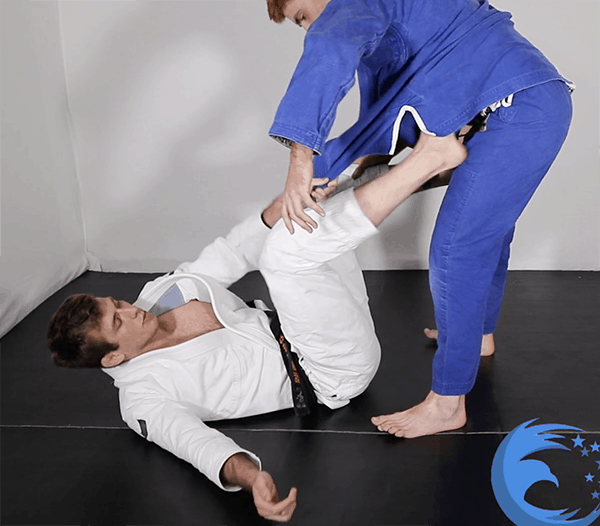
After maintaining a grip on your opponent’s lapel, in a seated position, it’s always a good idea to use the foot on the same side as that lapel to gently kick and loosen it.
This is what’s known as a tiger foot swipe and is one of the key concepts behind a successful Worm Guard set up.
Being Overt When You Need To Be COVERT
As mentioned above, what often goes hand in hand with fumbling is the complete telegraphing of your intentions of setting up a Worm Guard.
You may as well write your opponent a nice email telling them what you plan to do with their lapel beforehand.
Yes, there are situations where you can straight pull guard into the Worm, and we’ll get to that in a second, but quite often you’ll find your best entries are the ones that catch your opponent off guard.
As Keenan himself has mentioned, he is more of an opportunist when it comes to the Worm Guard and will prefer to play a wide variety of guards, pouncing on the Worm if and when the opportunity arises.
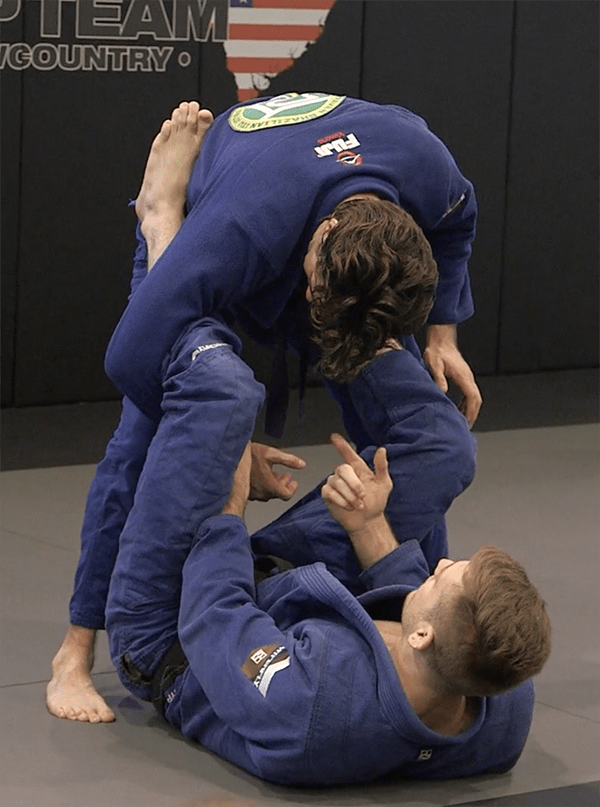
One such opportunity can be seen when playing with the Lasso Guard…
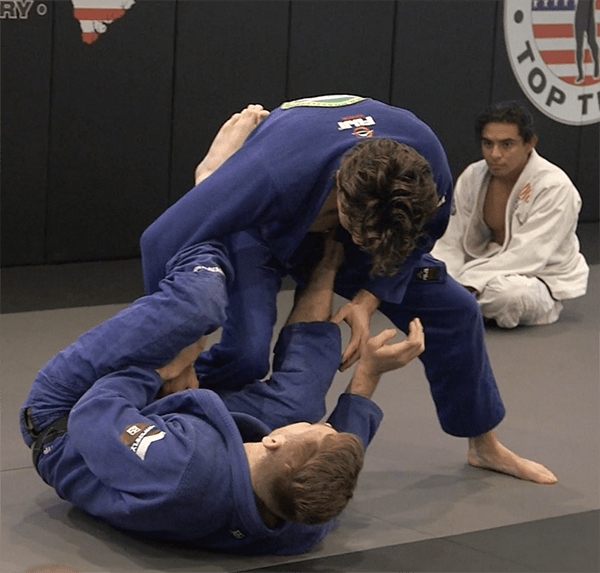
A common strategy for someone looking to pass this guard may be to step laterally to the open side and sit in the knee cut position (remember what we said earlier about the Worm Guard and the knee cut?).
As the opponent sits in this position, they are providing you with a great opportunity, provided you’ve gained some slack in their lapel beforehand, as per our previous tip.
Falling When Pulling Guard
This is a critical error many beginners make when pulling any guard from standing…
And it’s not entirely their fault.
Many people are taught to gain some grip on their opponent, raise one leg and place it on their opponent’s hip to act as a distance regulator, then fall to the side of that leg.
There are two problems with this…
- Many other gyms drill to counter that style of guard pull by simply pushing the leg away to earn a ridiculously simple pass.
- Falling to one side commits your body to that single trajectory, which means if and when you are countered you do not have the ability to be mobile or reset your base…
… it’s basically Christmas, but the gifts are only going one way.
If you’re planning on pulling guard to transition into the Worm Guard, there’s a more ideal sequence of events you should follow…
Sitting Too Close
There is another crucial mistake when people pull guard to transition to the Worm.
Even with all the good intentions of freeing the lapel, gaining a two-handed grip and sitting to your butt, you’re still open to a number of guard passes if you choose to sit down too closely to your opponent.
Instead, after taking a two-handed grip on your opponent’s lapel, take one step backwards before sitting to the ground.
Yes, this tip could have been included in the previous one, however, it is too much of an important step and can often go neglected…
… much like our next tip…

Tiger swipe to remove your opponent’s lapel from their belt
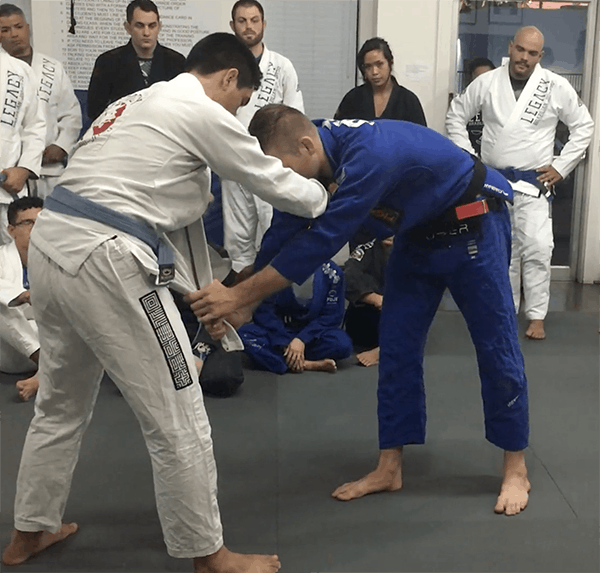
Take a two-handed grip on their lapel
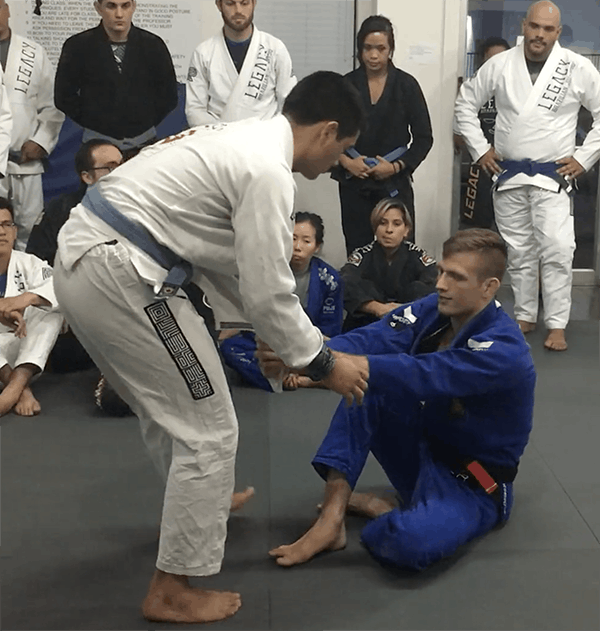
Sit down on your butt gently…
… do not fall back or to the side!
Trying To Enter The Worm Guard Without Controlling The Distance First
Another cardinal sin when setting up the Worm Guard is getting too excited and trying to weave the Worm grip without first controlling the distance on your opponent.
Controlling the distance is the crucial step between gaining an initial grip and weaving the worm that often goes missing.
Failing to properly keep a distance regulator, that is your legs, between you and your opponent, can lead to a case of severe smash pass-itis…
… and you don’t want none of that.
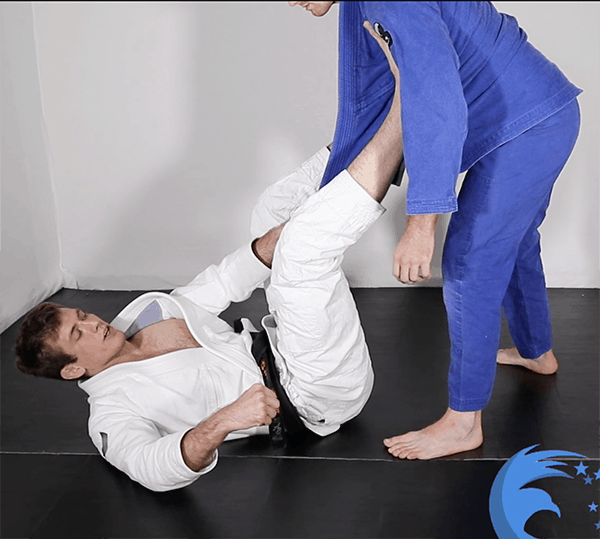
After gaining your grip, taking a step back and sitting to your butt, ensure you place at least one of your feet on your opponent’s shoulder/chest to control the distance.
What your other leg does is up to you at this stage and can be also used on the chest/shoulder, on the hip or as some form of hooking mechanism, for example, a De La Riva hook.
Not Swinging Your Leg When Sitting Up
Our last common mistake features in the transition of the lapel under your opponent’s leg to your other hand.
To pass the lapel through adequately, you will need to sit up, however, many beginners have waaaaaay too much faith in their abs and either sit up at a super slow pace or fail to sit up at all, allowing the opponent to post on them and shut down the grip transition.
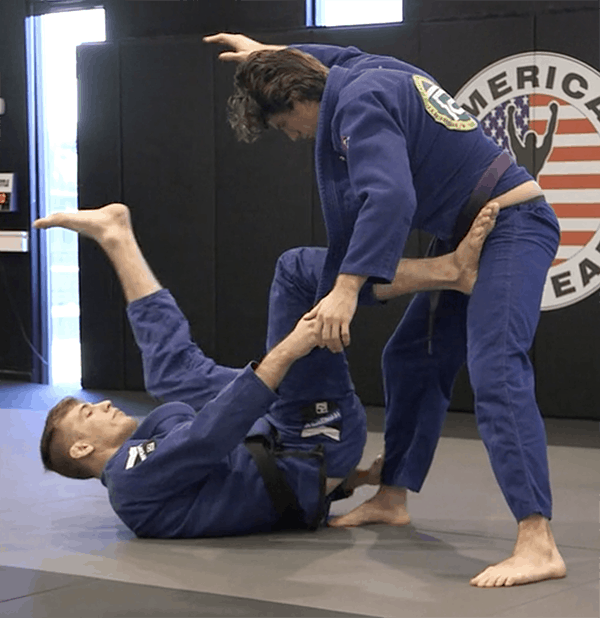
The best practice for sitting up quickly involves the swinging motion of your outside leg.
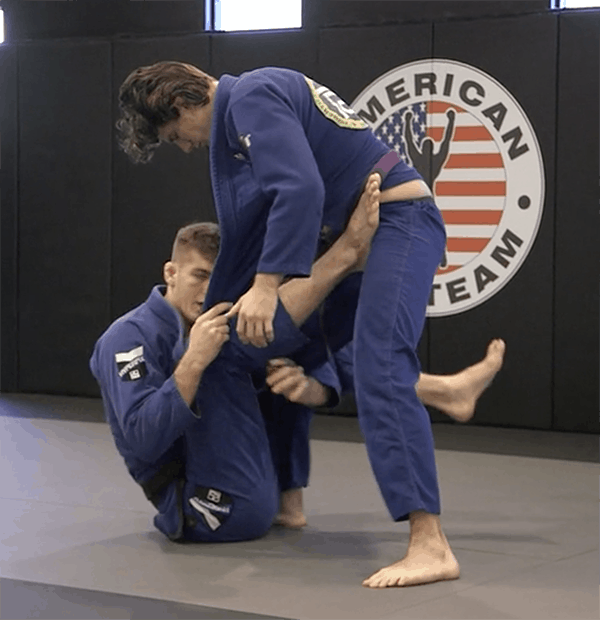
This will provide the momentum needed to get you into an upright position and complete the changing of grips.
There You Have It!
You now have a handful of solutions to some of THE most common mistakes people make when setting up the Worm Guard.
As mentioned earlier, the Worm Guard is a great tool both offensively and defensively. However, your ability to use it really comes down to how well you set it up.
You can choose to play the opportunist and snag a Worm Guard as the opportunities appear, or, you can shoot from the hip and pull guard to the Worm like the Bad MFer you are…
However you choose to do it, just remember, each step of the set up is key, and missing even one could see you fighting for dear life underneath #everydayporrada.
If you’re looking for more details, specific entries and some killer Instagram worthy highlight material you can find it all plus a whole lot more covered in great detail within the Lapel Encyclopedia!
Head on over to the LAPEL ENCYCLOPEDIA today to get your copy!
Or if you’d like to get a sample of the LAPEL ENCYCLOPEDIA before you buy, simply enter your details into the box below and we’ll send you 3 FREE videos over 3 days. PLUS opting in below means you’ll also be added to our newsletter, where you’ll benefit from FREE technique videos, updates on our latest products and amazing deals you won’t find anywhere else.

